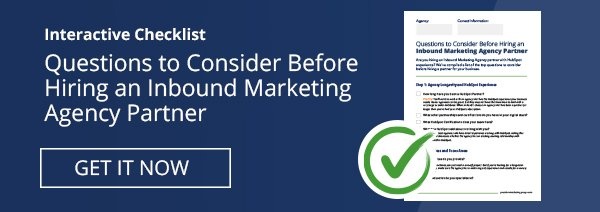"Positioning helps establish your product's or service's identity within the eyes of the purchaser." – Entrepreneur
See how it says "helps"? That's because even if you're executing a full-blown positioning strategy, you can't completely control how individuals position you in their minds. But it is better to have some control over how people see you than none at all. That's why if you don't already have a positioning strategy, now's the time to start positively influencing those who come across your company. Here's how to get started.
A First-Class Positioning Statement
If you have ever been on a Virgin America flight (prior to them getting bought out by Alaska Airlines in 2018), you probably remembered your first experience. The neon pink and purple lights welcomed you inside the very modern cabin, and I'm pretty sure there was upbeat music playing as you walked to your seat—making you think, "this is… different".
Virgin America's 'positioning statement was:
"California-based airline that is on a mission to make flying good again, with brand new planes, attractive fares, top-notch service, and a host of fun, innovative amenities that are reinventing domestic air travel. The Virgin America experience is unlike any other in the skies, featuring mood-lit cabins with WiFi, custom-designed leather seats, power outlets, and a video touch-screen at every seatback offering guests on-demand menus and countless entertainment options."
But they didn't have to tell me that. I felt it when I stepped foot in their aircraft, and I experienced it throughout the flight. They delivered on their positioning promise.
And that's the goal with positioning. To make it easy for you to find a happy place in the consumer's brain—without having them read your About Us description. Although Virgin America is technically now Alaska Airlines, the airline's spirit lives on across the pond in the UK and elsewhere in Virgin Atlantic.
Determining Your Company's Positioning Strategy
So, how do you compete with the big guys, even if you're a SMB?
Start with a strong positioning statement. Determine your company's "it" factor. What qualities differentiate your business? Here are some questions to answer that will help you nail it down:
- Why do people choose you over a competitor?
- What are your strengths, weaknesses, opportunities, and threats (SWOT)?
- What drives your passion as an organization?
- With what area in your industry do you have the most experience and expertise?
- What audiences, groups, or types of customers do you understand best?
- How do you approach working with each client that may be different from other methods?
- How do you price your services?
- What is your company's story, and how can you tell it in a way that sets you apart?
Use Outside-In Marketing Messages
One way to solidify your company's positioning statement is to use outside-in messaging: a process that takes the customer's needs and perceptions into account and creates a marketing message based on:
- Perceptions that already exist
- Opportunities to stand out from your competition
- Creation of value that your market will believe
Including your customers in the development of your marketing message creates a more powerful message. Outside-in messaging also build stronger relationships with your clients and often leads to a higher volume of referrals. Our experience has shown that clients appreciate the opportunity to help other businesses be more valuable. Plus, they appreciate the opportunity to be heard. Here is how it works:
1. Identify 8-10 customers to participate in the process
Make sure these customers are a good representation of the feedback you want – don't choose only customers who love you. If you offer various services or serve various markets- make sure to include customers from different industries or who have worked with you in different capacities.
2. Select a well-rounded interviewer
You should not conduct these interviews yourself. Your client is likely to be much more open with someone else, especially if they know that the results will be compiled together and not attributed to one person. The interviewer should put people at ease and engage them in a conversation that allows you, the company, to understand your business and client base better.
3. Ask permission
We always approach this as a presumed close but do make sure you ask your customers if they are willing to participate in the process and provide feedback. Explain why you are requesting this feedback and what you intend to do with the information.
4. Finalize your questions
Make sure the questions asked correspond with your overall business goals. If you are looking for input into your marketing messages, you want to understand why your client selected you. If they have had experience with other companies that provide what you do, try to uncover what they value, what they think your companies strengths are, and where they see opportunities.
Once the interviews are conducted, and the results are compiled- you can begin looking for trends. What is familiar about what the clients' said? What nugget did you discover that you never realized they valued? What things do you need to think about and improve to increase referrals? Answering these questions will help you create a simple, compelling, unique marketing message that focuses on value.
Ready? Now Execute!
Once you have a strong positioning statement, you're ready to execute. Your positioning should lead your content development, digital marketing efforts, social media presence, customer service, and company culture. In short, it should involve absolutely everyone and everything you do at your company. That's how your prospects and customers will take notice.
Feeling a little lost? Look to your buyer personas—these semi-fictional representations of your ideal customer based on research and real data about your existing customers. If you haven't already, developing your buyer personas is a great way to figure out what your customers think your "it" factor truly is! Here's the last article you'll ever need on buyer personas.


.png)

